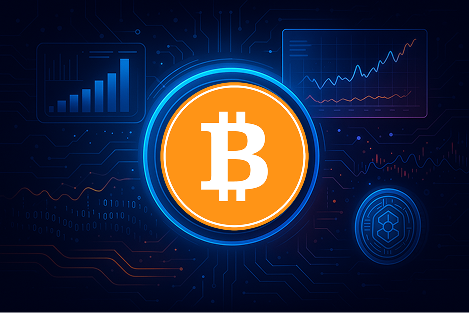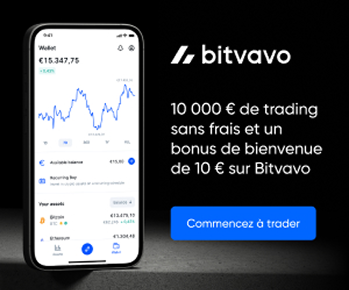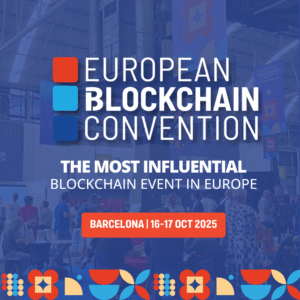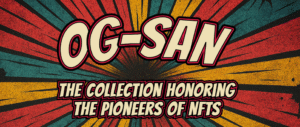The Graph (GRT): Price, Analysis, How It Works, and Investment Guide

Explore The Graph (GRT) – understand its price trends, technical workings, and investment potential in the decentralized data indexing space.
Introduction
The Graph (GRT) is a decentralized protocol designed to index and query data from blockchains, enabling developers to efficiently access and utilize blockchain data. This article provides an in-depth analysis of The Graph, covering its price dynamics, technical architecture, use cases, and investment potential.Key takeaways
- Short-Term Volatility: GRT’s price is subject to market fluctuations, reflecting broader crypto market trends.
- Influencing Factors: Regulatory developments and adoption rates significantly impact GRT’s performance.
- Long-Term Growth Potential: As blockchain adoption increases, demand for efficient data indexing solutions like The Graph is expected to rise.
- Positioning Among Cryptos: The Graph offers unique value in the crypto ecosystem by providing decentralized data querying capabilities.
Overview of The Graph (GRT)
Symbol: GRT Category: Infrastructure / Data Indexing Primary Function: Decentralized protocol for indexing and querying blockchain data Project Objective: To enable efficient and decentralized access to blockchain data, facilitating the development of decentralized applications (dApps). The Graph addresses the challenge of accessing blockchain data by providing a decentralized indexing protocol. Developers can create and publish open APIs, called subgraphs, making data easily accessible and queryable. This infrastructure is crucial for the scalability and usability of dApps across various blockchain networks. By decentralizing the process of data indexing and querying, The Graph enhances the reliability and efficiency of blockchain applications. Its ecosystem supports a wide range of participants, including indexers, curators, and delegators, all contributing to the network’s functionality and security.How Does The Graph Work?
The Graph operates as a decentralized protocol that indexes and queries data from blockchains. It allows developers to build and publish open APIs, known as subgraphs, which applications can query using GraphQL.Technical Components:
- Blockchain Type / Consensus: The Graph utilizes a Proof-of-Stake (PoS) consensus mechanism, ensuring network security and efficiency.
- EVM Compatibility: Fully compatible with the Ethereum Virtual Machine (EVM), facilitating integration with Ethereum-based dApps.
- Technical Features:
- Interoperability: Supports multiple blockchains, enhancing cross-chain data accessibility.
- Oracles: Integrates with oracle services to fetch external data.
- Layer 2 Solutions: Compatible with Layer 2 protocols, improving scalability and reducing transaction costs.
Token Utility:
The GRT token serves multiple purposes within The Graph ecosystem:- Indexing and Querying: Used to pay for data queries and indexing services.
- Staking: Participants stake GRT to become indexers, curators, or delegators, securing the network and earning rewards.
- Governance: Holders can participate in protocol governance, influencing the network’s development.
Key Points:
- Decentralized data indexing enhances dApp performance.
- Subgraphs provide customizable and efficient data access.
- GRT incentivizes network participation and security.
History and Development of The Graph
Launch Date: December 2020 Geographical Origin: San Francisco, USAKey Milestones:
- 2018: The Graph was founded to address the need for efficient blockchain data querying.
- 2020: Mainnet launch, enabling decentralized indexing and querying.
- 2021: Expansion to support multiple blockchains beyond Ethereum.
- 2022: Introduction of The Graph Explorer and Subgraph Studio for improved developer experience.
Founders and Team
Founding Team:
- Yaniv Tal: Co-founder and Project Lead, with a background in engineering and a focus on decentralized systems.
- Brandon Ramirez: Co-founder and Research Lead, specializing in protocol design and scalability.
- Jannis Pohlmann: Co-founder and Technical Lead, experienced in software architecture and development.
What Makes [Nom cryptomonnaie] Unique?
Unique Features and Use Cases of The Graph
Innovative Use Cases:
- Decentralized Finance (DeFi): Protocols like Uniswap and Aave utilize The Graph to index and query data, enabling real-time analytics and user interfaces.
- Non-Fungible Tokens (NFTs): Platforms such as Decentraland and Foundation rely on The Graph for indexing NFT metadata and ownership records.
- Data Analytics: Tools like Dune Analytics integrate with The Graph to provide comprehensive blockchain data analysis.
Unique Value Proposition:
The Graph offers a decentralized and efficient solution for accessing blockchain data, reducing the reliance on centralized indexing services. Its protocol ensures data integrity, scalability, and accessibility across various blockchain networks.
Comparison with Similar Projects:
- The Graph vs. Chainlink: While Chainlink focuses on providing external data to smart contracts, The Graph specializes in indexing and querying on-chain data.
- The Graph vs. Covalent: Both offer data indexing solutions, but The Graph emphasizes decentralization and community governance.
Conclusion and Future Outlook
The Graph stands as a pivotal component in the blockchain ecosystem, providing essential infrastructure for data accessibility and dApp development. Its decentralized approach to indexing and querying enhances the scalability and usability of blockchain applications. Looking ahead, The Graph aims to expand its support for additional blockchains, improve protocol efficiency, and foster community-driven governance. As the demand for decentralized data solutions grows, The Graph is well-positioned to play a significant role in the evolution of Web3.
FAQ
- What is the purpose of the GRT token? GRT is used to pay for data queries, incentivize network participants, and participate in governance decisions within The Graph ecosystem.
- Is The Graph a good investment? The Graph offers a unique solution in the blockchain space, and its adoption is growing. However, as with all investments, it’s essential to conduct thorough research and consider market risks.
- How does The Graph differ from Chainlink? While Chainlink provides external data to smart contracts, The Graph focuses on indexing and querying on-chain data, serving different but complementary roles in the blockchain ecosystem.
- Where can I store GRT tokens? GRT tokens can be stored in any wallet compatible with ERC-20 tokens, such as MetaMask, Ledger, or Trust Wallet.
- Is The Graph network secure? Yes, The Graph employs a Proof-of-Stake consensus mechanism and incentivizes honest participation, ensuring network security and data integrity.
- How can I purchase GRT? GRT is available for purchase on major cryptocurrency exchanges like Binance, Coinbase, Bitget, and Bybit.
Disclaimer :
Trading is risky and you may lose all or part of your capital. The information provided does not constitute financial advice and/or an investment recommendation
Top-Rated Platforms to Trade Crypto
Explore Our Financial Views on the Market
Crypto News & Insights
European Blockchain Convention 2025: Connecting Europe’s
Europe’s blockchain landscape is evolving rapidly despite challenges. Blockchain job...
Blockchain Life 2025 Dubai: A must-attend
The Blockchain Life Forum 2025, happening on October 28–29 in...













